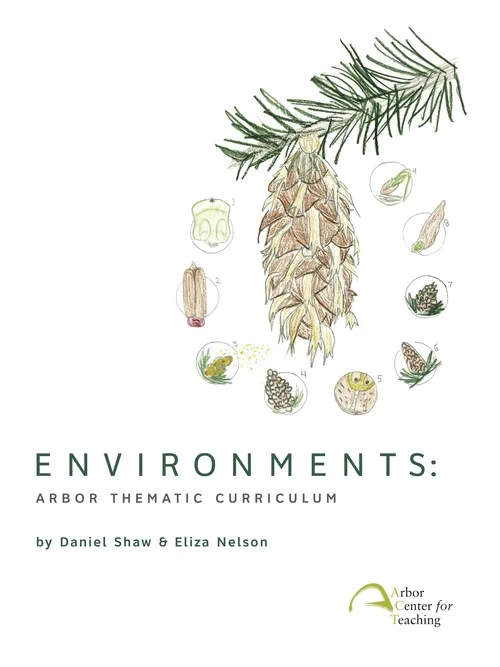Environments:
Environments:
$25.00
Arbor Thematic Curriculum - Volume 0
Curriculum introducing studies of environmental niches, habitats, ecosystems, biomes, the human body, and oceanography to fourth and fifth graders at the Arbor School of Arts & Science.
Contents
Unit 1: Campus Niche
Unit 2: Oregon Habitats
Unit 3: Human Body
Unit 4: World Biomes
Unit 5: Oceanography
Quantity:
Chapters and Contents
Unit 1: Campus Niche
- What is a niche (or microclime)?
- How can you tell one niche from another?
- How do different types of plants reproduce?
- What special features allow particular animals or plants to thrive in different spaces?
- What are the challenges of mapping a 3-dimensional world on a 2-dimensional page?
Unit 2: Oregon Habitats
- What is a habitat?
- What unique features distinguish each habitat?
- What are adaptations?
- How do creatures adapt to their particular habitats?
- How do plants adapt to their particular habitats?
- What are the relationships between and importance of producers, consumers, and decomposers?
- What is a food chain?
- What is the importance of plants?
Unit 3: Human Body
- How do different people think differently?
- How do our bodies process nutrients, air, blood, information, and waste?
- How does each system in the body interact with others?
- What are the mechanisms that allow one particular body system to function?
- How does the human eye work?
- How is the human body similar to and different from creatures you have studied before?
- How does the brain use different parts for different tasks?
Unit 4: World Biomes
- What is a biome?
- How does a biome differ from a niche and a habitat?
- What creates bands of biomes around the globe?
- How do wind currents shape global climate?
- How does the axis of the earth affect global climate
- How and why do animal and plant adaptations develop over time?
- How are humans impacting the environment?
- How are people and cultures shaped by the biomes in which they reside?
- What is a map projection?
- What are the challenges of mapping a three-dimensional globe in two dimensions?
Unit 5: Oceanography
- What guides the classification of ocean invertebrates into phyla and class?
- How can we piece together the parts of a totally new system into a comprehensible whole?
- What is the generating power behind tides?
- How do tidal zones reflect niches?
- What systems have ocean invertebrates developed for digestion, defense, reproduction, and respiration?

